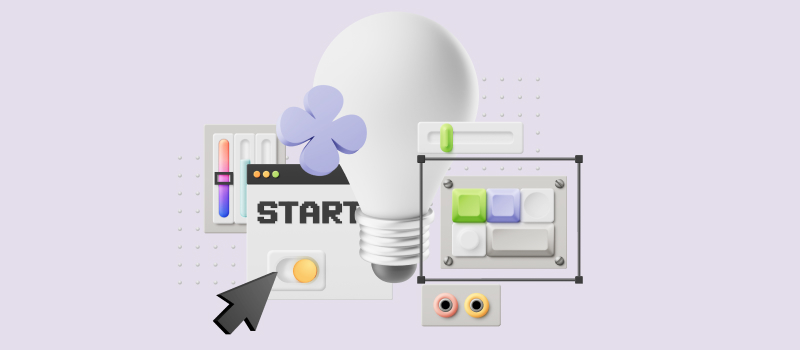
You’ve heard of people calling in sick. You may have called in sick a few times yourself. But have you ever thought about calling in well? It’d go like this. You’d get the boss on the line and say like Tony Robbins did: “Listen, I’ve been sick ever since I started working here, but today I’m well and I won’t be in anymore.” Call in well.
Taking an extra day off from work without being sick or having a good reason is not a dream today: many companies increase the number of paid days off to remain attractive as employers. The traditional vacation + sick leave system is becoming a thing of the past. The current trend is to create a single pool of paid time off and let the employees take it as they need. This has proved to be helpful in reducing unscheduled absences and improving work schedule planning.
Paid Time Off (PTO) is a bank of hours that basically includes vacation time, sick time and personal time. The concept implies that an employee can draw days off from this bank and use them at their own discretion: book a vacation, take a day off for studies – or just for a one-day trip to the countryside. Of course this requires thorough calculation.
Most Companies Prefer Simple Leave Tracking
There is no one-size-fits-all approach to the PTO balance calculation. The balance is accrued on the basis of various leave types that are defined individually by each employer. So let’s take a look at actiTIME statistics to see how PTO balances are structured and how leave tracking is managed in companies around the world.
As we can see, almost all companies do leave tracking, but they are mostly using timesheet software for that. And they prefer to keep their balances uncomplicated: generally, three commonly used leave types appear to be sufficient.
It is obvious that a web timesheet is a much better choice for calculating PTO balances than a spreadsheet or HR software – but there are even smarter solutions. Leave time management tools keep track of employees’ absence more accurately. For example, they allow entering schedule changes and recording when an employee comes late or leaves early. Some actiTIME users have already appreciated this functionality and now use actiPLANS for leave tracking.
Snow Days, Military Leaves, Sabbaticals:
Statistics Revealing Curious Facts
Most companies only use three standard leave types: Sick leave, vacation, and time off. Among other frequently used leave types, time off in lieu, studies, remote work, and family leaves should also be mentioned.
Nothing out of the ordinary, right? However, some leave types help discover interesting trends and facts.
Current political trends force employers to add new, uncommon leave types. Silicon Valley companies are now offering paid time-off for protest against Trump’s immigration crackdown policies. And this is not just another perk for the employees. Many of the high-tech companies depend on the skilled workforce with H1-B visas, which will be subject to restrictions after Trump signs the policy change order.
As for other leave types that are not defined by social or political polarization, sabbatical leave is used much more frequently than you might expect. Experts say that the concept of working for 40 years and then retiring is becoming outdated . There should be an opportunity to recover from job burnout or improve career prospects regardless of age and years of employment. The fact is, the employers realize that sabbaticals bring long-term benefits for both the company and the employee.
Regional differences sometimes are not just remarkable; they provide insight into how people work and live. And that’s how national stereotypes are defeated. You think about siesta and short Friday in Spain – and then discover that ½ day Friday and Summer Hours are tracked by American companies. You are certain that all Germans love applying complicated rules to everything – and you learn that most German companies calculate their paid time off balances by only 3-5 leave types.
Snow Days and Storm Days are tracked by some Canadian and American companies. Obviously, extreme weather conditions are common where they are located if they need to create special leave types for bad weather days.
Military leaves are the reality of working life in Switzerland. They are tracked in almost all Swiss companies – and it’s no wonder. Basic training in the Swiss army only takes from 18 to 21 weeks, so an employee can get conscripted and return to work in less than half a year.
Some companies have the only leave type: just Absent or Time Off. A perfect implementation of the concept: the company officially doesn’t care why you are absent today – just don’t forget about your deadlines.
And probably the best leave type ever: Call-in Well Day, a reference to the Tom Robbins’ quote. Consider it a verbal expression of today’s PTO policy trend: excused absence doesn’t necessarily need compelling reasons.
Summary
It wouldn’t be an exaggeration to say that free time is the most valuable asset of a hard-working and ambitious employee. To retain talented and prospective workers, employers offer them more efficient ways to manage their time off – and this requires accurate PTO calculation. That is why choosing the right tool is crucial: errors can cause losses for the employer and rob the employees of their precious free time. Which, in turn, defeats the very idea of a PTO policy – treating employees like adults while cutting down on absenteeism.
For time tracking and leave management purposes, you may want to consider actiTIME. Track employee absences from sick leaves and vacations to other custom leave types. Automate leave calculation and accruals by setting up individual or company-wide PTO accrual rules so that software can automatically update PTO balances. In case you need more control over PTO balances, you can adjust it manually, review balance history and pull reports.
















































